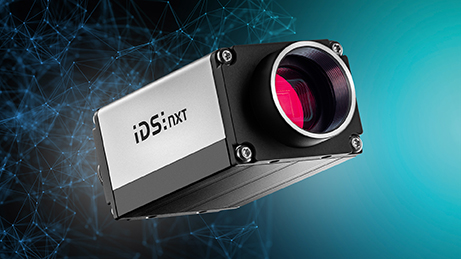How artificial intelligence transforms agriculture
Use of intelligent cameras in agriculture
Intelligent cameras pave the way for future-oriented image processing tasks such as plant growth monitoring, weed detection or checking whether certain object conditions are met. Artificial intelligence can also be used, for example, to classify fruit varieties or to identify damaged parts (e.g. apples with marks or color deviations). To cover all possible variances with classical image processing would be very time-consuming and costly. AI is able to solve these challenges in no time at all. However, AI solutions usually require specialist knowledge, development effort, and investment in computing and data storage hardware. Lowering this threshold is the main focus of the new all-in-one AI vision system IDS NXT ocean. It requires neither special knowledge in deep learning nor camera programming. Getting started has never been easier.

Computer vision and image processing have become indispensable tools in various application fields. Image processing systems are increasingly confronted with a constantly growing variety of products and variants and organic objects. Conventional approaches with rule-based image processing quickly reach their limits if the image data to be analyzed varies too frequently and the differences are difficult or impossible to describe using algorithms. In such cases, a robust automation is not feasible due to an inflexible set of rules, even if the task is supposed to be easy for humans to solve.

Through machine learning, the ability to make flexible and independent decisions can now also be transferred to image processing systems. Using neural networks and deep learning algorithms, we can teach a computer to see objects, recognize them, and draw conclusions from what it has learned previously. Like a human being, such an “intelligent automation” learns and decides on empirical values.
Differences to classical image processing
The main difference to rule-based image processing is how and by whom image characteristics are identified and how the learned knowledge is represented. With the classical or “symbolic approach” an image processing specialist is responsible for selecting the image features that are decisive and describing them according to certain rules. Many lines of source code are required to specify in detail how to solve a given task, because the software can only recognize what the rules define. The subsequent execution takes place within set limits without any room for interpretation. Therefore, the actual intellectual achievement lies solely with the image expert.
The procedure for working with neural networks is quite different. Their advantage is to learn independently which image characteristics are important in order to draw the right conclusion. We speak of a “non-symbolic approach” then, since the knowledge is only implicit and does not allow any insights into the solutions learned. Which characteristics are stored, how they are weighted and which conclusions are drawn is only affected by the quantity and content of the training images.
Deep learning algorithms recognize and analyze the complete image content and relate the recognized characteristics to the “terms” to be learned, depending on the frequency of occurrence. The statistical frequency produces what we call experience during training. It is important to understand that the quality of the results – i.e. the speed and reliability of object detection – depends on what a neural network detects and concludes. The knowledge of the respective professional plays a very decisive role, because he must provide the necessary data sets for the training with as many different example pictures as possible including the terms to be learned. The responsibility for the classical approach, which lay with an image processing specialist, is taken over by a data specialist in machine learning.
But which (new) skills are needed to bring machine learning into your own company? Breaking down the development of an AI application into individual steps actually reveals tasks and concepts that are completely new to learn compared to the classical approach. Although necessary instructions and open source software are usually freely available from cloud providers or on platforms such as Github, they only provide the fundamental basic tools which require a high degree of experience. And not only the creation, but also the execution and evaluation of the training results on an appropriate hardware platform requires understanding and knowledge of hardware, software and their interfaces.

Start immediately with the machine learning all-in-one solution
IDS wants to support the user right from the first steps with the new technology. The company combines deep learning experience and camera technology with an all-in-one inference camera solution. This enables every user to start immediately with AI-based image processing. With the AI vision system IDS NXT ocean, IDS lowers the entry barrier and provides easy-to-use tools for creating inference tasks in a few minutes and executing them immediately on a camera, without the need for prior knowledge.
The concept is based on three essential components:
- An easy to use training software for neural networks
- an intelligent camera platform
- including an AI accelerator that executes the neural networks on the hardware side.
All components have been developed directly by IDS Imaging Development Systems and are designed to work seamlessly together. This makes workflows easy to operate and the overall system very powerful.